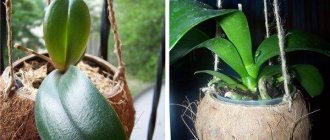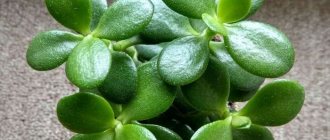Ficus trees are considered not too difficult to care for. If the plant is placed correctly and all growing recommendations are followed, it will quickly gain green mass. During the growing season, Benjamin and Ali regularly throw out new shoots. Rubber-bearing, Lyre-shaped stretch upward, giving a leaf every week. But sometimes the plant seems to freeze and stop increasing in size. There can be many reasons why a ficus does not grow - from poor care and the wrong pot to pest damage or simple aging.
Growth rate of ficus rubber and other varieties
Elastica ranks second in rubber content after Hevea, which is why the trunk is quite soft and lignifies late. In nature, it has a height of 30 m; if favorable conditions are created at home and the top is not removed, it can grow up to 10 m. Having reached the ceiling, the main shoot bends and takes a horizontal position. Of course, no one is going to let the Rubber Ficus develop in this way - it’s ugly and inconvenient.
Varieties that can grow as long as they are not limited by pruning include Black Prince. Every year it adds 60-100 cm, producing a new leaf every week during the growing season.
But there are cultivars of more modest sizes. For example, ficus Melanie will take a long time to grow up to a meter, since the distance between the nodes is only 2 cm. When planted several copies in one pot, it looks like a beautiful dense bush.
Other types worthy of attention:
- Lyre-shaped without pruning will grow up to 3 m, capable of adding 20 cm per year. But it is usually not kept in the form of a column - at the slightest deviation from the usual schedule, large, musical instrument-like leaves of the ficus grow larger or smaller than before. From Lirata, skillful flower growers create beautiful branched standard trees with raised side shoots that form a dense crown or bush, the width of which exceeds the height. Leaves that vary so much in size don't seem out of place.
- Ficus Microcarpa, obtained from seeds or by rooting a cutting, will grow like an ordinary tree, at an average speed (10-15 cm per year), eventually reaching 1.5 m. But no one is interested in it - Ginseng with special tricks, pruning the trunk , the roots are forced to stop growing and are made to look like a bonsai.
- The dwarf one fully lives up to its name - it is a creeping ficus that easily takes root with shoots. It does not stretch upward, but will grow in width. Capable of covering an area of 4 square meters in a few years. m. If he is given the opportunity.
- Binnendijka - looks like a tree with narrow long foliage, can be easily shaped, without pruning at home it will grow quickly, up to 1.5, maximum 2 m.
- The Bengal ficus in nature is a banyan tree - a tall tree that supports a wide crown with pillar roots. In pot culture, it is an attractive plant with a soft trunk that becomes woody over several years, capable of stretching very quickly, reaching 3 m.
Temperature
What to do if the ficus does not grow, does not form young leaves and generally looks rather lethargic? Assess the characteristics of the temperature regime in your home; it is quite possible that it was its violation that caused this kind of problem. Let's say your indoor flower gradually weakens, and its leaves curl - this is the result of low air temperature in the house. The optimal values for your green specimen should be from +18 to 30 degrees. If the temperature is about 15 degrees or lower, the plant must be urgently saved from hypothermia.
Why ficus benjamina and other species grow poorly
There may be one reason or caused by a whole complex of minor defects in care. To find out why the ficus stopped growing, you first need to rule out normal aging. The culture will live in the apartment for about 15 years, then it will first slow down and then stop developing, begin to turn yellow and shed its leaves. The branches will begin to dry out, starting with the smallest tree-like forms, and the rubber-bearing ones will simply wither away.
Of course, among all types of ficus there are long-livers. If from the moment of purchase they were provided with ideal care, cool wintering, regular transplants and constant high humidity.
The old specimen will still grow poorly, nothing can be done here. Unless you carry out drastic pruning and give a killer dose of stimulants. But when the ficus is beautiful, it is better not to do this - the decorative effect is lost for several years, and there is no guarantee whether it will be possible to restore the crown.
Other reasons for slowing or stopping growth:
- poor or improper feeding;
- insufficient and excessive watering;
- little or a lot of light;
- ficus will not grow normally in a pot that is too loose, or if the root has occupied almost the entire volume;
- a transplant has not been performed for a long time;
- low air humidity;
- damage by pests and diseases;
- temperature violation;
- frequent reshuffles.
Loss of leaves due to watering errors
For Ficus Benjamin, it is equally dangerous to find yourself in completely dry or oversaturated soil:
- If overwatered, especially when kept in cool air, the plant will develop root rot. The ficus loses the ability to actively feed, its leaves dry out and begin to crumble.
- Dry soil provokes the plant to save moisture, and the ficus gets rid of “extra consumers,” that is, foliage. At the same time, the growth rate of young shoots decreases, raising a legitimate question from gardeners: “Why doesn’t Benjamin’s ficus grow?”
In order for the plant to always delight with bright greenery and grow well, the soil under the ficus should dry out a couple of centimeters between waterings. The frequency of watering depends on the temperature and humidity in the room, the size of the plant and the properties of the substrate.
Ficus does not grow: what to do
If the ficus, in addition to slowing down its development, begins to shed its leaves, first of all you need to find out why this is happening. Then review the maintenance and care:
- Check for pests or diseases. If necessary, treat with appropriate medications. It will be possible to take any additional actions only when the plant recovers.
- Remove the ficus from the pot and inspect the earthen ball. This way it will immediately become clear whether the container is suitable and whether the owners have allowed it to overflow. He may need to be transplanted. If the problem is discovered in autumn or winter, it is recommended to wait until spring if possible. During the dormant period, only emergency transplantation is permissible when it comes to saving the plant.
- If necessary, watering should be adjusted. The ficus will grow normally when the top layer of soil dries out in potted specimens to the depth of the phalanx of the index finger, in a tub - by 3-4 cm. There must be lower holes for water drainage, a drainage layer occupying at least 1/5 of the container.
- It is recommended to review the feeding system. Universal fertilizers, and especially those intended for flowering crops, are not suitable for ficus - they contain little nitrogen and a lot of potassium. It may stop growing and the leaves will begin to fall just because of this. Folk remedies used on an ongoing basis (except for yeast) should generally be excluded without further consideration. The crop needs to be fed with a specialized mineral complex, in extreme cases - for decorative deciduous plants. There is a lot of nitrogen, the other components are balanced.
- You should carefully examine the plates to see if they have turned yellow due to a lack of microelements, which are better absorbed by spraying the aerial parts.
- Ficus needs diffused light. Elastica suffers the most from the bright sun; Lyre-shaped and variegated forms of other species can withstand some direct rays.
- At temperatures below 15° C, ficuses stop growing. Only Rubber and Bengal respond normally to heat of 27-30° C, the rest suffer.
- Air humidity should be constantly high. How to maintain it is up to the owners to decide. But wet expanded clay on a tray, sphagnum between the pot and the flowerpot, an indoor fountain, an air humidifier, and periodic bathing in the shower do not cancel, but only complement daily spraying. Especially in winter in a warm room.
Especially for those who like to move plants from place to place: ficus cannot stand this. Changes are stress, in response to which it stops growing even with ideal care. You need to rotate the pot relative to the light source no more than 20° at a time.
How to help a plant at home?
The tree will be healthy if you follow the following recommendations:
- provide adequate lighting;
- maintain a microclimate optimally suitable for ficus;
- In the spring, in the mornings, take the pot out to the balcony, but do not allow direct sunlight to hit the crown;
- when parasites appear, spray with insecticides;
- in case of fungal infection, use fungicides.
Attention! In everything you need to observe moderation. This applies to both watering and fertilizing. And if the humidity in the room is too high, mold may appear.
What to do if a flower has few leaves?
Bare stems not only spoil the appearance of the ficus. This makes the flower weakened. When a tree has a sparse crown, the process of photosynthesis slows down. The plant lacks nutrients and energy for full development.
In this case, he needs proper care.
When breeding ficus, it is worth considering certain rules:
- Young plants should be replanted once a year, and adults - once every 2-3 years. They need this procedure when the inside of the pot is completely entwined with roots.
- If the flower grows in a large tub, it is enough to change the top layer of soil once a year - from 8 to 12 cm.
- Feed in spring and late summer. In winter, the tree is in a dormant stage.
- Follow the irrigation regime.
- Protect from drafts and sudden temperature changes.
If these recommendations are followed, the plant recovers quickly.
Interesting! The absence of lower leaves is the norm for an adult plant. With age, part of its trunk becomes exposed.
How to speed up slow growth?
When a tree has enough nutrients, it can fully develop. The lack of minerals can be compensated by applying fertilizers. In spring, the flower is fed once a month, and in summer - every 2 weeks.
But if the ficus is affected by disease or attacked by parasites, it is first treated with fungicides. Otherwise, the flower will not be able to fully absorb beneficial microelements.
Fertilizer application technology:
- they are used after watering, while the soil is still wet;
- when calculating the dose, the age of the plant and its varietal qualities are taken into account;
- Nitrogen-containing preparations are more suitable for activating growth;
- if the ficus has been replanted, you can feed it only after a month;
- dry fertilizers are slightly deepened into the top layer of soil, then they gradually dissolve when it is moistened;
- liquid mineral complexes are diluted with water and poured under the roots of the ficus.
If feeding is carried out correctly, the ficus will quickly restore its original appearance.
How to speed up the growth of Ficus Benjamin
If the care is regulated, the place is chosen correctly, it has not been changed for a long time, and a healthy ficus does not grow and stands still, it needs to be stimulated artificially. Of course, in winter all processes are suspended, and you will have to wait until spring for new leaves or shoots to appear.
Transplants
To speed up growth, it is first recommended to transplant the ficus. It is better to carry it out when the beginnings of new leaves appear, at the very beginning of the growing season. The diameter of the pot should be 2-4 cm larger than before, even if the old ficus was too crowded. It is better to skip a season and wait for rapid growth in the next one than to lose a flower due to acidification of the soil.
It is recommended to change the substrate to another brand, not to make it yourself, and to refuse “improvements” with any components. It is also advisable not to use the universal one - there is nothing wrong with it, but the intended soil for ficus and palm trees is still better.
Sometimes gardeners shorten the roots of plants when replanting. For some crops and bonsai this is quite justified, but for ficus trees it is absolutely not suitable. They will stop growing for at least a season, and may even die.
Feeding
Accelerating growth processes with nitrogen alone is a mistake. There is a high probability that there will be a disproportion between the development of the above-ground part of the plant and the root, which needs phosphorus. This will not lead to anything good.
It is better not to increase the intensity of fertilizing, but to replace the cheap fertilizer for ficus with a good brand, and take only the liquid form. Crystals and powder, no matter what the manufacturers claim, do not completely dissolve; a sediment forms at the bottom, even if this is not visible to the naked eye.
When it remains at the bottom of the watering can, the plant does not receive enough fertilizer and is poured into the soil - the ficus receives shock from burning the roots. Even if this does not lead to the shedding of leaves, the flower will not grow for some time. And then he will receive a new portion of feeding.
It is better to give microelements in chelated form - this is the only way to ensure a sufficient supply of iron, manganese, zinc, copper, and molybdenum. They are not absorbed through the root, but settle in the soil or on the walls of the pot, forming a coating.
In winter, all feeding is stopped. During the rest period, they will bring nothing but harm. Unless the room temperature is high, but this is bad in itself, especially with low humidity.
Stimulants
At the beginning of the growing season, the ficus can be watered or treated with a stimulant. One, and not all that we managed to buy in the nearest store.
An excellent remedy is 1 tablespoon of vodka per glass of water. The plant gets a good shake-up, but this is exactly the case when stress is beneficial. Suitable for flowers that sit still for some unknown reason.
Expert opinion from the site Your Flower
Galina Alexandrovna
More than 30 years of experience in growing indoor and garden flowers
Ask a Question
If your ficus leaves are dull, it may be lacking oxygen. In addition to loosening the soil the next day after moistening, it is recommended to dissolve 2 tbsp in a liter of water. l. hydrogen peroxide, water and spray the plant.
When the reason is determined correctly, it will give results not the next day. There was an error - it won't get any worse.
Epin and zircon are excellent products. But it is recommended to use them not when the stress factor has occurred, but before it. For example:
- on the eve of pruning;
- on the eve of winter;
- a few days before the onset of cold weather or extreme heat;
- before going on vacation, when there is no confidence that the ficus will be provided with decent care.
Attention, the ficus was attacked by parasites!
Diseases can also be an obstacle to cultivation. Both fungi and rot may appear on various parts of the trunk and leaves. Be careful, such “guests” can often not only slow down growth, but lead to death. Below we have selected photos that show the disease.
Types of parasites: 1. Leaf fungus. It manifests itself as black spots on the leaves. After the defeat, the leaves begin to fall off. 2. Gray mold is another pest. It looks like gray mold, which appears if the plant is flooded or the room is too warm. When this disease appears, they can be resuscitated in the following way: remove all affected areas, water less frequently, and do not allow the room to become stuffy. 3. Sooty fungus is a gray coating on the leaves. We wash the infected areas with soapy water at room temperature; if the lesion on the foliage is too large, it is better to get rid of the leaf completely. 4. Root system rot. This is the most dangerous disease; in this case, the seedling itself withers. Unfortunately, the roots cannot be revived. In this case, the bush must be disposed of along with the pot, since it contains mold residues; reproduction in this container is no longer possible.
Crown formation, ficus pruning
Pruning is a popular method that allows you to give your ficus benjamina the desired shape. Most often, the following types of crown formation are used for these plants:
- Ball-shaped crown.
- Bush-like.
- In the form of a single or multi-tiered standard.
- Bonsai style.
- In the form of various sculptures.
Experts recommend planning to trim your ficus in spring or early summer , since it is at this time of year that its accelerated growth begins.
When forming the crown, it is necessary to take into account the age of the plant . It is easiest to give the desired crown shape to young specimens. This, in turn, guarantees that as a result of pruning the plant will acquire the required shape.
Pruning Ficus Benjamin is usually considered in relation to those plants that have a fairly overgrown crown, or specimens that, due to their unusually large size, have lost their former attractiveness.
In order to avoid unpleasant consequences after pruning ficus Benjamin, it is necessary to carry out this operation taking into account the following rules:
- try to ensure that after the operation the plant does not lose its naturalness;
- before removing the branches, try to imagine what the ficus will look like without them;
- branches must be removed only with a sterile instrument;
- it is necessary to keep the bark intact;
- When pruning ficus, you must ensure that the leaves are not damaged;
- Ficus branches must be removed at an angle to the top edge.











